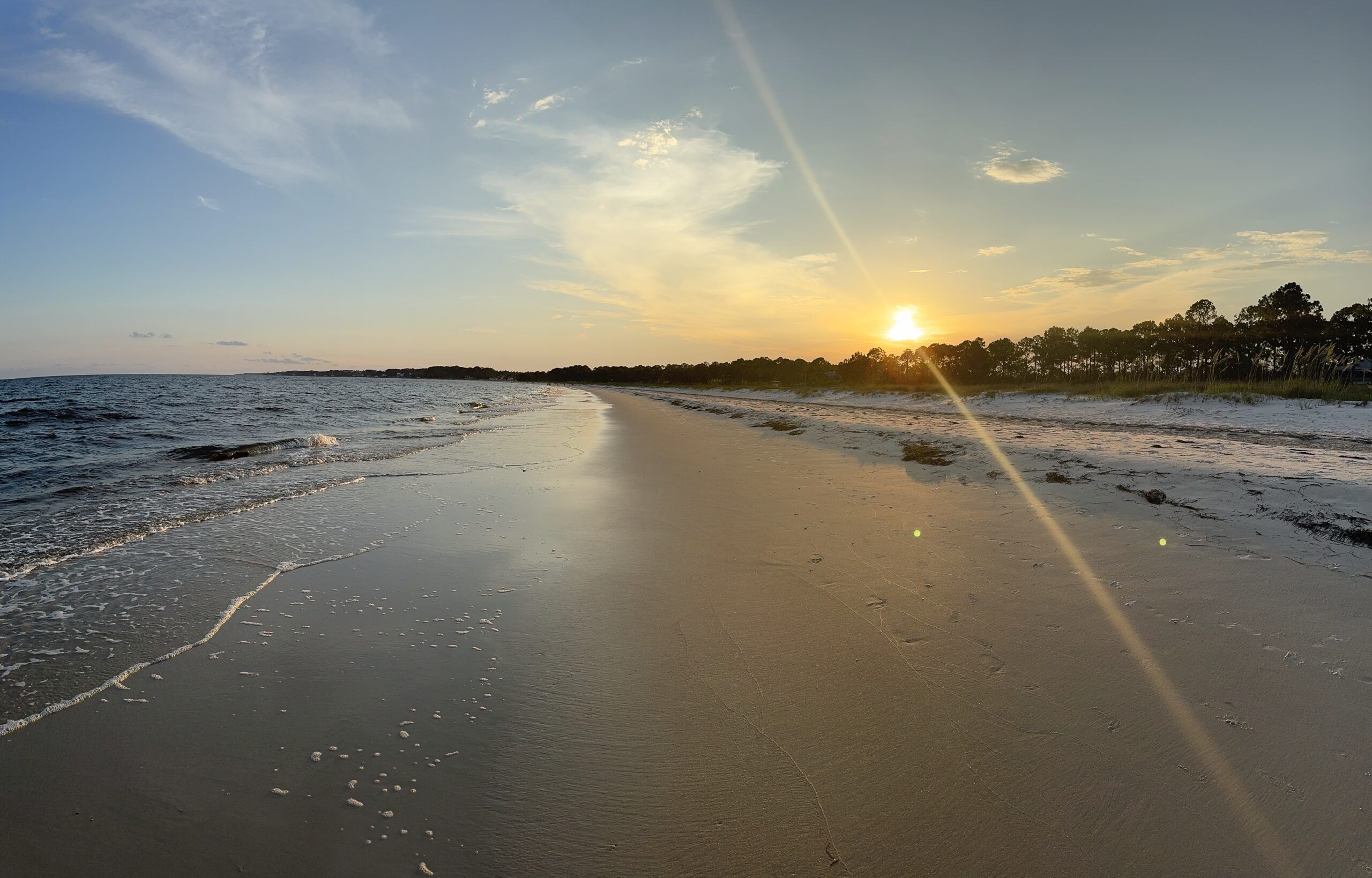
Things You Should Know Before Moving to North Florida
A true insider’s guide to the quirks, challenges, and joys of life in the Sunshine State’s northern stretch.
Thinking about moving to North Florida? Before you pack the boxes and head south, it’s worth knowing what life here is really like — the good, the challenging, and the wonderfully unexpected. Living in North Florida blends the laid-back charm of the Deep South with miles of sandy coastline, crystal-clear springs, and wild spaces teeming with wildlife. It’s a place where hurricane prep and sunscreen share equal space on your shopping list, where you might trade rush-hour traffic for evenings watching the sunset over the Gulf, and where a friendly wave from a stranger is just part of the day. In this insider’s guide, you’ll learn about the hazards to watch for, the local quirks to embrace, and the unique delights that make North Florida one of the most captivating places to call home.
Wildlife & Nature Encounters
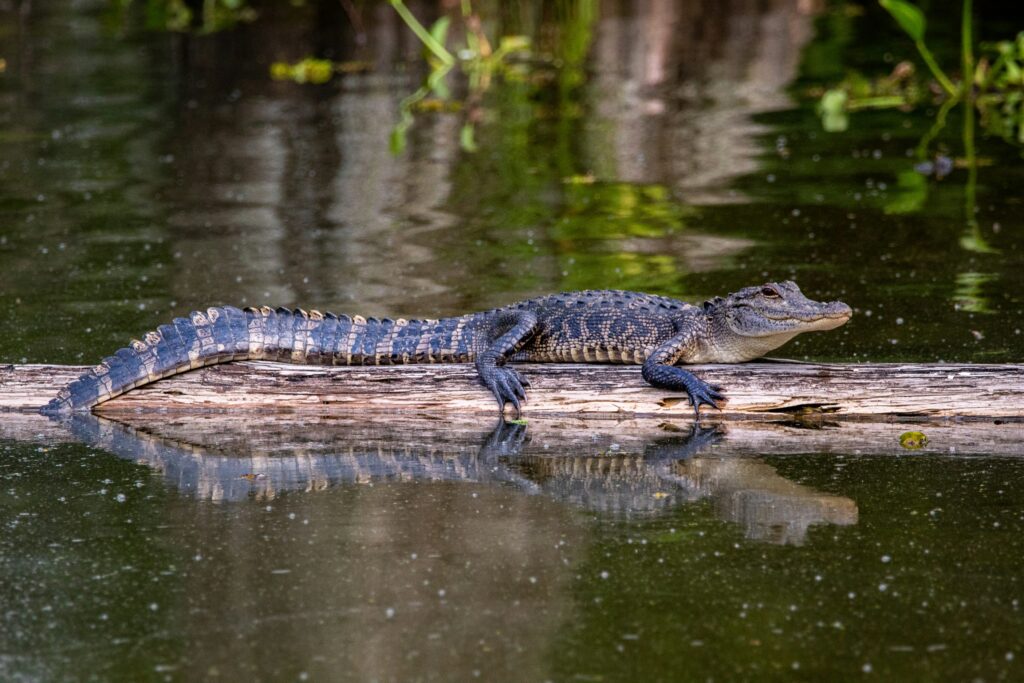
When you’re living in North Florida, you quickly learn that you share the land and water with some fascinating (and sometimes challenging) neighbors. From toothy predators and reptiles to stealthy biters, you’ll be sharing your new home with a colorful cast of wild neighbors. Here’s what you can expect — and how to live comfortably alongside them.
- Trash-raiders: Black bears and raccoons treat garbage cans like a free buffet, so invest in sturdy bins or bear-proof cans. In my neighborhood, I’ve watched entire rows of trash cans get raided in a single night before pickup. If you’re moving here, do yourself a favor and invest in a bear‑proof trash can lock — it’s worth every penny.
- Alligators everywhere: f you’re moving to North Florida, get used to spotting gators in retention ponds, golf courses, and even brackish waterways. Use caution when kayaking, jogging, or walking near the water’s edge, especially in spring and summer, as large bulls and protective mothers can be highly territorial and aggressive.
- Sharks share the waterways: Whether you’re visiting or living in North Florida, the Gulf and rivers hold an incredible diversity of shark species. You’ll find bull sharks in rivers and estuaries, right alongside gators in some spots. Local waters also host blacktip, spinner, hammerhead, tiger, and nurse sharks. Some anglers even come here specifically for shark fishing. Encounters are uncommon, but sharks are an ordinary part of an extraordinarily diverse marine ecosystem that helps define the region.
- Big cats, small cats: Florida panthers (a subspecies of cougar) are exceedingly rare but are part of ongoing wildlife corridor restoration efforts. They are shy and generally avoid people, but if you encounter one, make yourself look larger, speak firmly, and never run. Bobcats are far more common and much smaller, and while they too avoid human contact, it’s a treat to spot one darting across a trail or yard.
- Snakes: Florida is home to six species of venomous snakes: cottonmouths (water moccasins), eastern diamondback rattlesnakes, timber rattlesnakes, pygmy rattlesnakes, coral snakes, and copperheads. Cottonmouths are often found near swamps, creeks, rivers, and ponds, and while some swear they will “chase” you, the smarter approach is not to stick around to find out. Rattlesnakes prefer dry, wooded, or grassy areas, and coral snakes tend to stay hidden in leaf litter. There are many more non-venomous species than venomous ones, and all snakes play an important role in controlling pests. The best advice? Give every snake space and let it go about its business.
- Biting bugs: Mosquitos, biting flies, and the dreaded no-see-ums are a part of life here. Yellow flies, in particular, have a clear season in many areas, often lurking near wooded edges, marshes, and shaded trails. Their bites can be especially painful, and some residents set out large black balls coated in a sticky substance to catch them — a surprisingly effective remedy. Mosquitos thrive in still or swampy water, while no-see-ums are more common near coastal marshes and beaches, especially at dawn and dusk.
- Red bugs (chiggers): These hide in Spanish moss and tall grass. When I was in elementary school, new kids always wanted to play with the moss — pulling it down to use as a wig, a beard, or stuffing — but us locals knew better. If you do get chigger bites, you’ll usually notice clusters of red, itchy bumps around your ankles, waistband, groin, or behind your knees. The best treatment is to wash the area thoroughly, apply anti-itch cream, and avoid scratching to prevent infection.
- Stingrays: Shuffle your feet when wading in the Gulf to avoid accidentally stepping on a stingray. The tip of their tail has a sharp barb that can cause a painful wound. In reality, stingrays are more likely to scuttle away than bother you, but if you do get stuck, rinse the injury with hot (not scalding) water to help neutralize the venom and seek medical attention. A cool fact: stingrays have electroreceptors that help them detect tiny movements in the sand, making them fascinating members of the Gulf’s ecosystem.
- Wild hogs: These powerful, invasive animals roam much of rural North Florida and can destroy lawns, gardens, and even farm crops overnight. They root through soil in search of food, leaving behind torn-up turf and deep holes. If you see them, keep your distance — they can be aggressive if cornered, especially sows with young. Fencing, motion-activated lights, or working with local trappers are common control methods for landowners in hog-prone areas.
Weather & Seasonal Realities
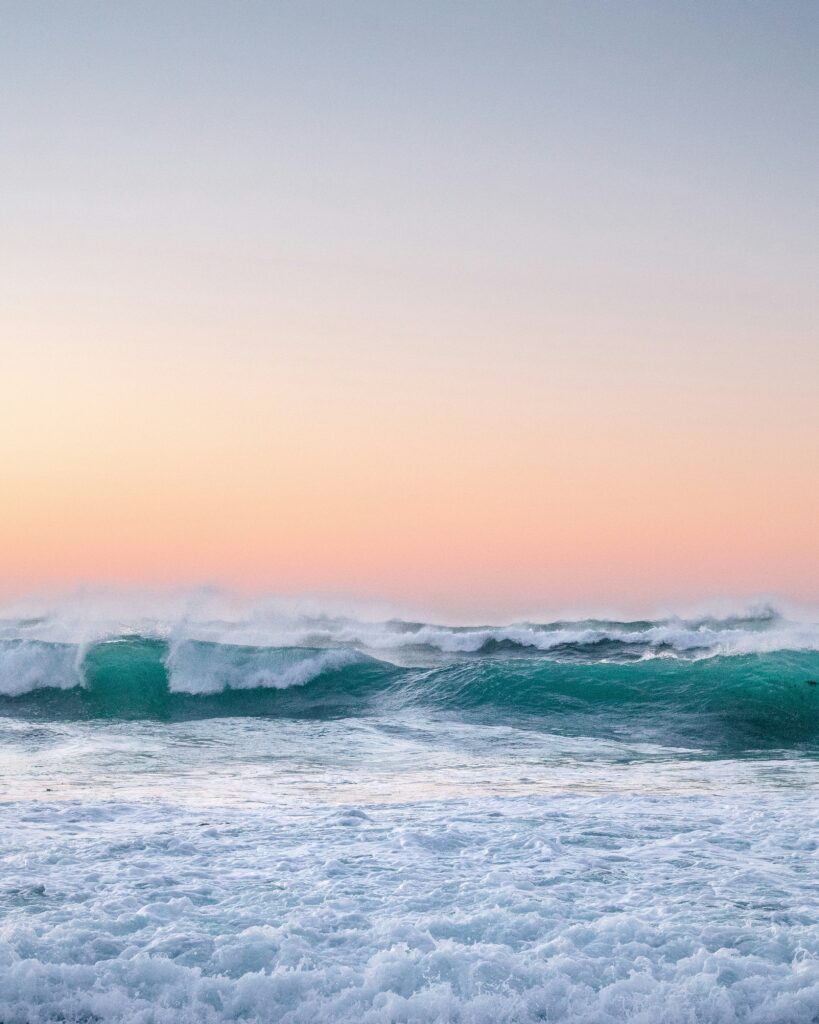
Moving to North Florida means getting used to a climate that can swing from sunny perfection to wild and unpredictable in a single afternoon. It’s a place where weather isn’t just small talk — it shapes daily life, from what you wear and how you drive to how you prepare your home. Here’s what newcomers should know so they can plan, stay safe, and maybe even enjoy the quirks of our local seasons.
- Afternoon thunderstorms: When you’re living in North Florida, you’ll keep an eye on the sky in summer since thunderstorms are a near-daily summer event that sweeps in fast, loud, and heavy. You’ll learn quickly to keep an umbrella handy — though you might notice most locals never seem to carry one, choosing instead to dash through the rain like it’s just part of daily life here — almost like a quirky local tradition.
- Hurricane season: Anyone moving to North Florida should understand the reality of storm prep. Hurricane season runs from June to November, with late August to early October being the most active. Power outages after a storm can last for days, sometimes even a week or more, and the devastation in harder‑hit areas can be significant. While lesser category storms are often met with the lighthearted tradition of a “hurricane party,” serious ones require real preparation — stock up on food, water, batteries, and know your evacuation routes. Locals even joke about the “Waffle House Index” — if it’s closed, you know it’s bad.
- Rip currents: Common on both the Gulf and Atlantic coasts. Pay attention to flag warnings, and if you are caught in one, don’t try to swim straight back to shore. Instead, stay calm and swim parallel to the beach until you are out of the current’s pull, then angle back in. Every year, not knowing this simple rule results in preventable tragedies, so take it seriously.
- Heat and humidity: Summers are hot and muggy, with daytime highs often reaching 98–100°F (37–38°C) and heat indexes that can make it feel well over that thanks to the humidity. Stepping out of a hot parking lot into an air‑conditioned building can feel like a blast of refreshing Arctic air — thank goodness for A/C, which was, fun fact, invented in Apalachicola. Winters are mild, averaging 60–65°F (15–18°C) during the day, but can dip to freezing on the coldest nights, occasionally bringing a light frost. Every so often, it even snows — and Milton, Florida, holds the current record for the most snowfall in the state thanks to a recent winter storm.
- Flood zones: Low-lying areas can flood even outside hurricane season. Know your elevation before buying, and if you are in a designated flood zone, factor in the cost of flood insurance — it’s not usually covered by standard homeowners’ policies, but it can save you from financial disaster. Some neighborhoods have been controversially built over former wetlands, which means high water tables and soggy yards are a reality. Research the property’s history before purchasing to avoid heartache and wet feet later on.
- Dirt road washouts: If you’re shopping for rural property, there’s a good chance you’ll end up on a dirt road. While there’s a certain charm to it, understand that heavy rains or flooding can wash out sections and make them impassable. Keep a vehicle suited for rougher conditions, like a sturdy 4×4 or SUV that can handle mud, ruts, and high water, and know alternative routes in case your main road goes under water or turns to mud.
Lifestyle Quirks & Surprises
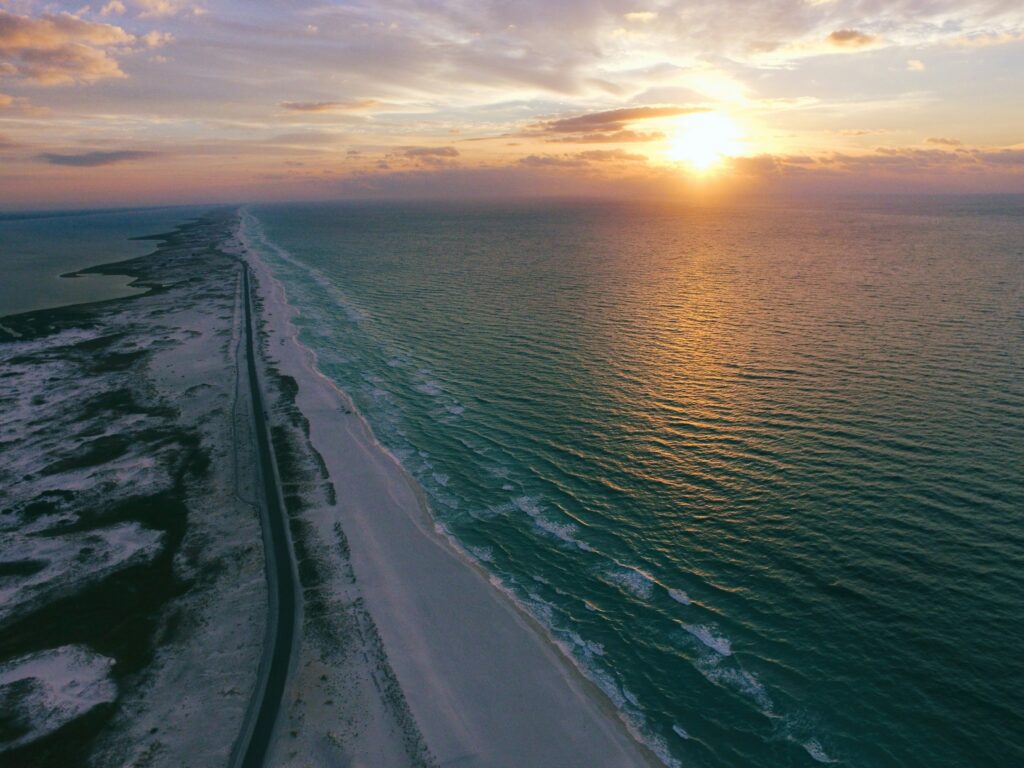
Living in North Florida means embracing a mix of Southern charm, coastal culture, and small-town quirks. From infrastructure oddities to environmental realities, these are the little things that shape daily life once the moving boxes are unpacked.
- Springs vs. sinks: For many new arrivals moving to North Florida, the first trip to a spring is a revelation. Freshwater springs are a summer gem — they’re perfect for swimming, tubing, or kayaking, and make for a great picnic spot. You can snorkel to spot fish, bring a float for lazy drifting, or just wade in to cool off on a scorching day. Sinkholes are best avoided unless you are a trained diver. While some are striking blue oases and people do swim in them, they’re often not the cleanest place for a dip. Sinkholes are formed when limestone bedrock collapses, exposing groundwater, and in Florida’s case, they often connect to the same aquifer that feeds our springs. A few even have quirky histories as dump sites withe everything from old cars to entire buses resting at the bottom.
- Single-bridge beach towns: When you’re living in North Florida, you plan beach trips around traffic patterns. On busy summer days or holiday weekends, traffic can back up for hours — looking at you, Pensacola Bay Bridge. With no exits and standstill traffic, it can get hot fast, so bring plenty of water, make sure your A/C is working, and leave early enough to arrive on time.
- Insurance surprises: Homeowners’ insurance can be costly, with extra expenses for flood and wind coverage. In some cases, it can be challenging to even find a company willing to cover certain dwellings, especially older homes or those in high‑risk areas. Shop around early, work with a local agent who knows the market, and ask about mitigation steps — like storm shutters, roof reinforcements, or updated wiring — that might lower your premium or expand your options.
- Coastal corrosion: Salt air wears down vehicles, HVAC systems, and anything metal. Unlike in northern states where road salt causes visible undercarriage rust, Florida’s salt exposure can be more subtle but just as damaging over time, especially in coastal areas. Regular rinsing, undercoating, and inspections can help prolong a vehicle’s life. Salt spray can also be tough on landscaping, stunting growth or killing plants not suited for coastal conditions, so choose salt-tolerant species if you want your yard to thrive.
- Seasonal smoke: Prescribed burns are common for forest management, and the smell can travel far. For newcomers, the sight of intentional fires can be alarming, but these controlled burns are an important tool to reduce wildfire risk, promote healthy forests, and maintain certain habitats. Local forestry agencies and park services usually post notices online or at trailheads before a burn, so check for updates if you’re planning to hike, camp, or spend time outdoors nearby.
- Pollen season: Live oak and pine pollen in spring can blanket vehicles, porches, and everything else in a thick yellow-green dust, triggering allergies for many. Pine trees can also drip sticky sap that may damage vehicle paint, so it’s best not to park underneath them. If you’re prone to seasonal allergies, be prepared with medications or air purifiers during peak season.
- Snowbird season: In winter, traffic can spike as northern visitors arrive to enjoy the mild climate. Expect busier roads, longer waits at restaurants, and higher demand for rentals — and remember, much of our region’s economy thrives on tourism year‑round, so a little extra patience and kindness toward visitors goes a long way.
- Septic vs. city sewer: This may be common in rural areas across the U.S., but it’s worth noting for anyone new to North Florida’s countryside. Many rural properties here rely on septic systems instead of city sewer. They require regular pumping and maintenance, and repairs can be expensive if neglected. If you’ve never had one before, take time to learn how it works, schedule inspections, and budget for upkeep so you’re not caught off guard.
- Well water quirks: Properties on well water in North Florida may have unique tastes or odors, often due to the region’s sandy soils, limestone bedrock, and proximity to the Floridan Aquifer. This can lead to higher mineral content, a sulfur smell, or even iron staining. Water treatment systems can help, but it’s best to have the water tested before purchasing so you understand exactly what you’re working with and whether filtration or softening will be needed.
Unexpected Delights
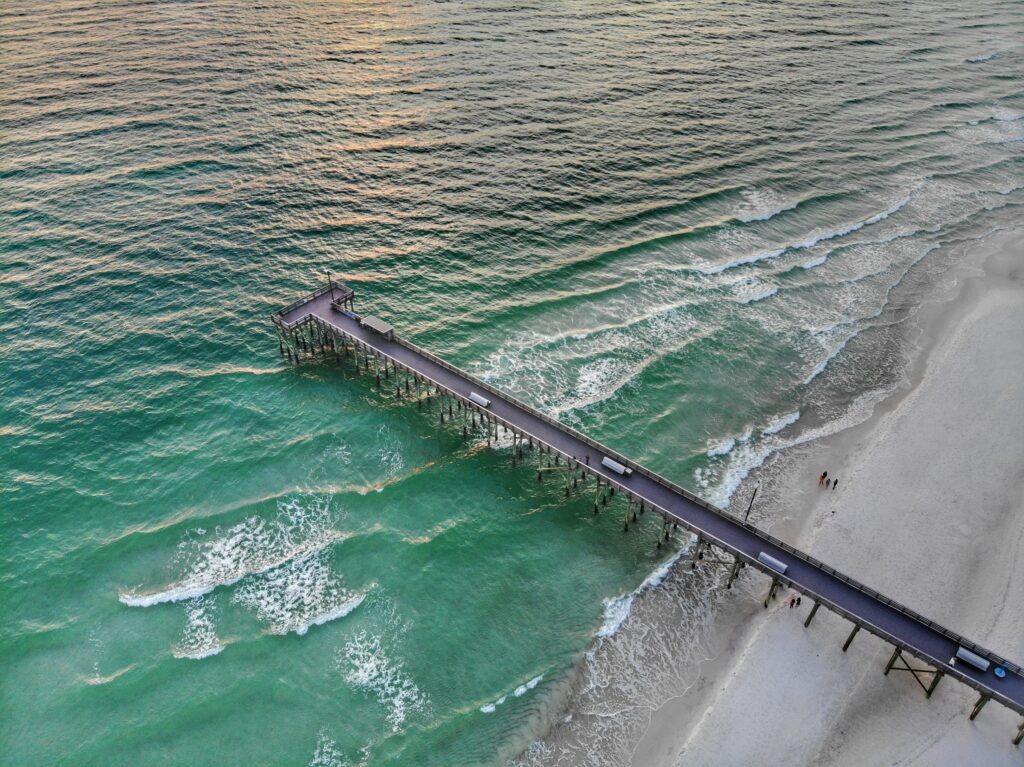
After all the warnings and practical advice, it’s time to talk about the best part — the things that make living in North Florida truly special. From breathtaking natural beauty to small-town traditions you won’t find anywhere else, these are the moments and experiences that make all the quirks and challenges worth it.
- Unique marine life: The waterways here are alive with dolphins leaping in the wake of boats, gentle manatees grazing in warm springs and rivers, and — every once in a while — a surprise whale sighting offshore. These encounters never lose their magic, whether you’re a seasoned local or brand new to the area.
- Natural springs: For those moving to North Florida, discovering these crystal-clear waters is like finding a hidden paradise. Crystal-clear and a steady 72°F (22°C) year-round, these are the ultimate escape on a sweltering summer day. Whether you’re floating lazily downstream in an inner tube, snorkeling with fish in the shallows, or just wading in to cool off, North Florida’s springs feel like nature’s swimming pools. Some are tucked deep in the woods, others are part of lively state parks with picnic tables and trails.
- Seafood culture: Living in North Florida puts you in the middle of a world-class seafood scene. You haven’t truly arrived until you’ve had Gulf shrimp so fresh it was caught that morning, or oysters shucked right at your table. Many coastal restaurants have docks where you can tie up your boat after a day on the water, hand over your catch, and have it cooked to order while you relax with a cold drink. From humble dockside shacks to bustling seafood festivals, eating local here isn’t just a meal — it’s a way of life.
- Southern hospitality: It’s not unusual for strangers to wave as you pass by, whether you’re driving a dirt road or walking downtown. In small towns, people will remember your name after one introduction, and neighbors often show up with garden vegetables or fresh-baked goods “just because.”
- Wildflower seasons: Spring and early summer bring blankets of color along rural roads and open fields — golden coreopsis, purple lupine, and cheerful black-eyed Susans. It’s the kind of scenery that makes you pull over just to snap a photo.
- Starry nights: Away from city lights, the night skies here are spectacular. On clear nights you can spot constellations, the Milky Way, and even the occasional shooting star. Many locals make a habit of bringing lawn chairs outside just to soak it all in.
- Outdoor festivals: There’s always something on the calendar — seafood boils, bluegrass jams, arts and crafts fairs, and small-town parades. They’re more than events; they’re gatherings where the whole community turns out, and newcomers are always welcome.
- Sunrises and sunsets: North Florida’s sandy beaches stretch for miles, meeting the open horizon in a view that feels endless. At sunrise, the sky glows in soft pinks and golds over the calm water; at sunset, the Gulf turns molten orange and purple. It’s a scene that makes even a simple walk on the beach feel unforgettable.
- Outdoorsman’s paradise: Historically celebrated as a haven for sportsmen, North Florida still delivers — and then some. Fishing, hunting, hiking, kayaking, camping, and backcountry exploring are part of the fabric of life here. For those who thrive outdoors, this is one of the last great places in the Southeast where you can truly live, play, and connect with the land and water.
Moving to North Florida isn’t just about finding a new house — it’s about stepping into a lifestyle shaped by wild beauty, quirky traditions, and a community that still takes the time to wave hello. Yes, there are bugs, storms, and the occasional critter in your yard, but there are also sunsets that stop you in your tracks, neighbors who remember your name, and weekends that can take you from sandy beaches to crystal springs in a single afternoon. For those willing to embrace its charms and respect its challenges, North Florida has a way of feeling like home faster than you ever expected.